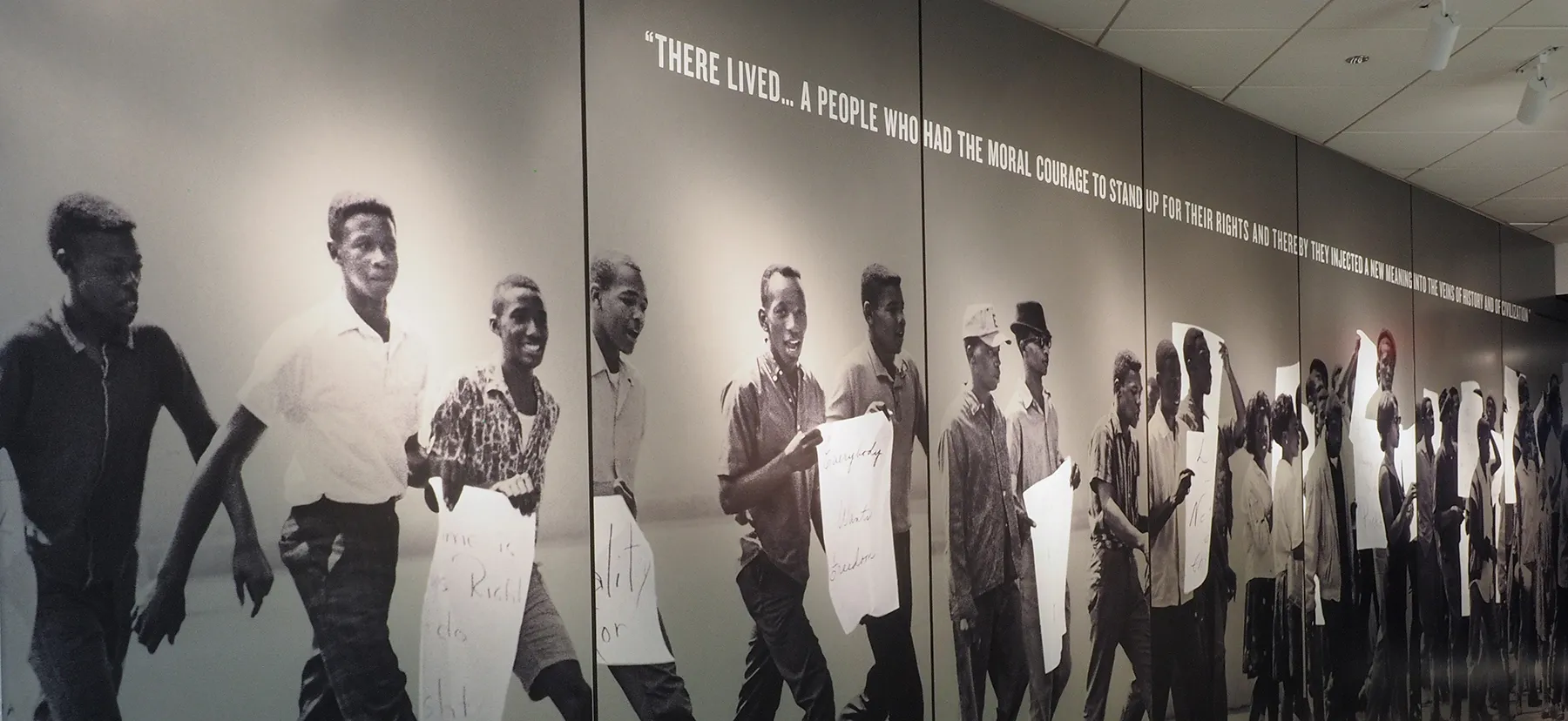Students can supplement their National Civil Rights Museum both before and after their visits. Use the resources below to learn more about the struggle for freedom and justice around the world.
You will need Adobe Acrobat Reader to view the following linked documents. Download Adobe Acrobat now.
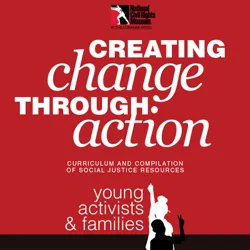
Resources
Our Resources for Exploring and Understanding Civil and Human Rights contains a small sampling of the numerous resources available for students, parents, and teachers on civil and human rights. The purpose of this guide is to introduce readers to the challenging and complex stories that make up the national and international civil and human rights struggle. The topics covered often involve emotionally challenging topics and difficult aspects of history which may require additional contextualization as well as deep discussion for young readers.
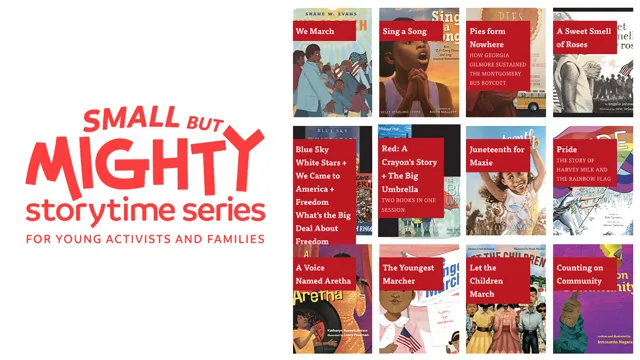
Small But Mighty Storytime
Our Small but Mighty Storytime sessions thematically focus on peacemaking, kindness, diversity, or creating positive social change. Parents, teachers and children engage together for stories and connecting activities or resources. For more information, contact Dory Lerner, K-12 Museum Educator, at dlerner@civilrightsmuseum.org.
Watch the series of video of virtual storytime sessions for families of children 2 to 12 years old.

National History Day Policy
We receive many interview requests each year for National History Day (NHD). However, according to NHD Project’s guidelines, “Historians do not interview other historians. It is inappropriate to do so. Instead, read historians’ books and other published works.” Learn more about NHD guidelines regarding interviews.
We are happy to assist by recommending resources for further research after the student has conducted their basic research. As museum professionals, we are historians. So we are viewed as a secondary source, instead of a primary source.
We highly recommend listening to oral histories from the 1960’s or of activists who have told their stories since that time. Oral history recordings and transcripts (the written record) exist in libraries and archives around the world. Some favorite resources such as The Martin Luther King, Jr. Research and Education Institute at Stanford University, The National Archives, Civil Rights Movement Archive, Voices of Civil Rights Movement, SNCC Digital Gateway or Eyes on the Prize Interviews by American Archive of Public Broadcasting.
If a student has a question that they absolutely cannot find an answer to in their own research, they are welcome to email that question to education@civilrightsmuseum.org. If possible, we will assist by offering a source where the answer might be found.
E-Learning Activities
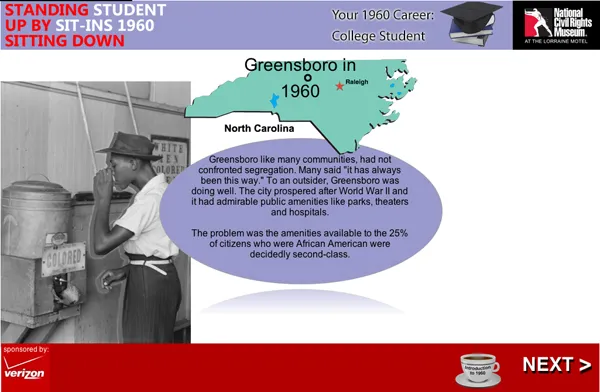
Standing Up By Sitting Down
As a resource for both students and educators, the eLearning Sit-In activity is modeled after the museum’s Standing Up By Sitting Down exhibit. Students will virtually walk through the protest experience through a series of questions. The lunch counter sit-ins are an example of the non-violent direct action strategy used by college students that spread across the U.S. in 1960.
The Standing Up by Sitting Down eLearning activity is sponsored by Verizon.
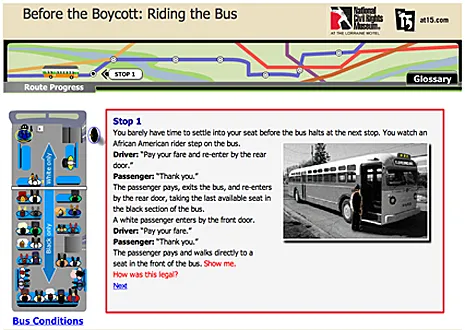
Before the Boycott
This educational resource allows students to view the 1955-57 Montgomery Bus Boycott from the perspective of a newspaper investigative reporter. Students are guided through a series of bus stops where they are given scenarios of the unfair treatment and conditions under which blacks during a bus ride in Montgomery, AL.
